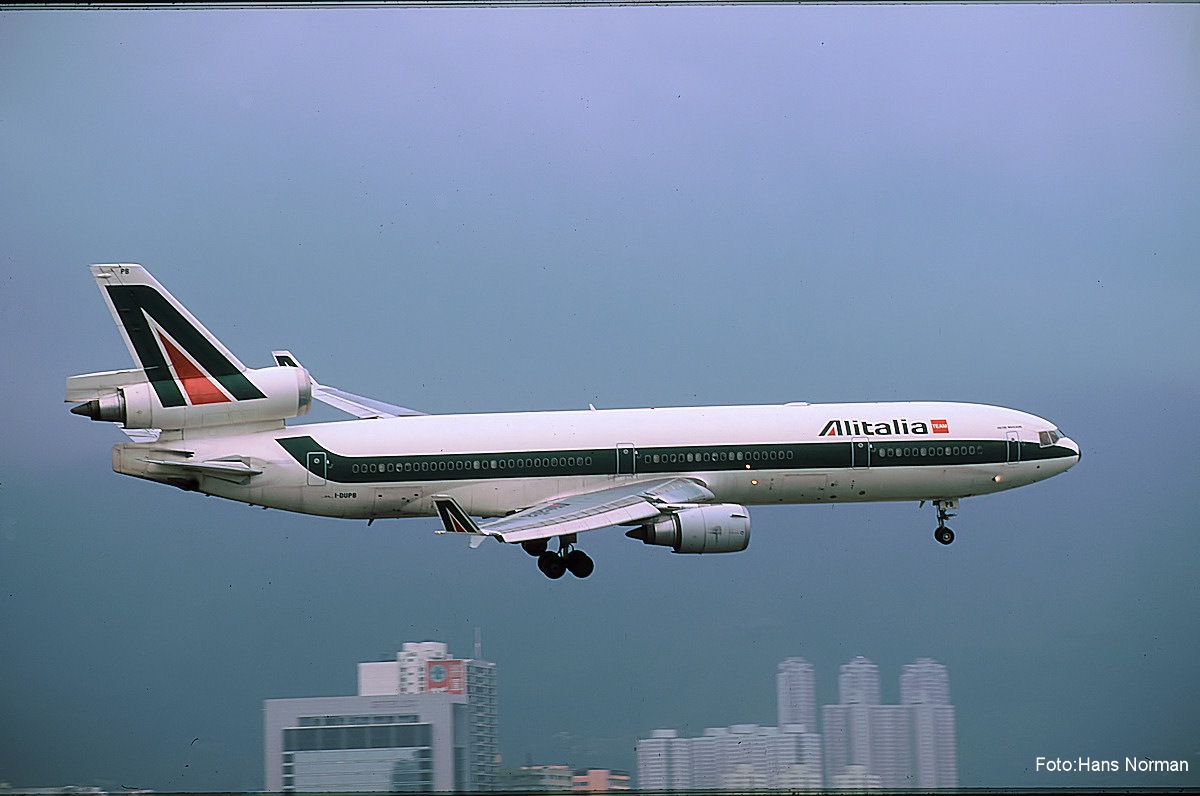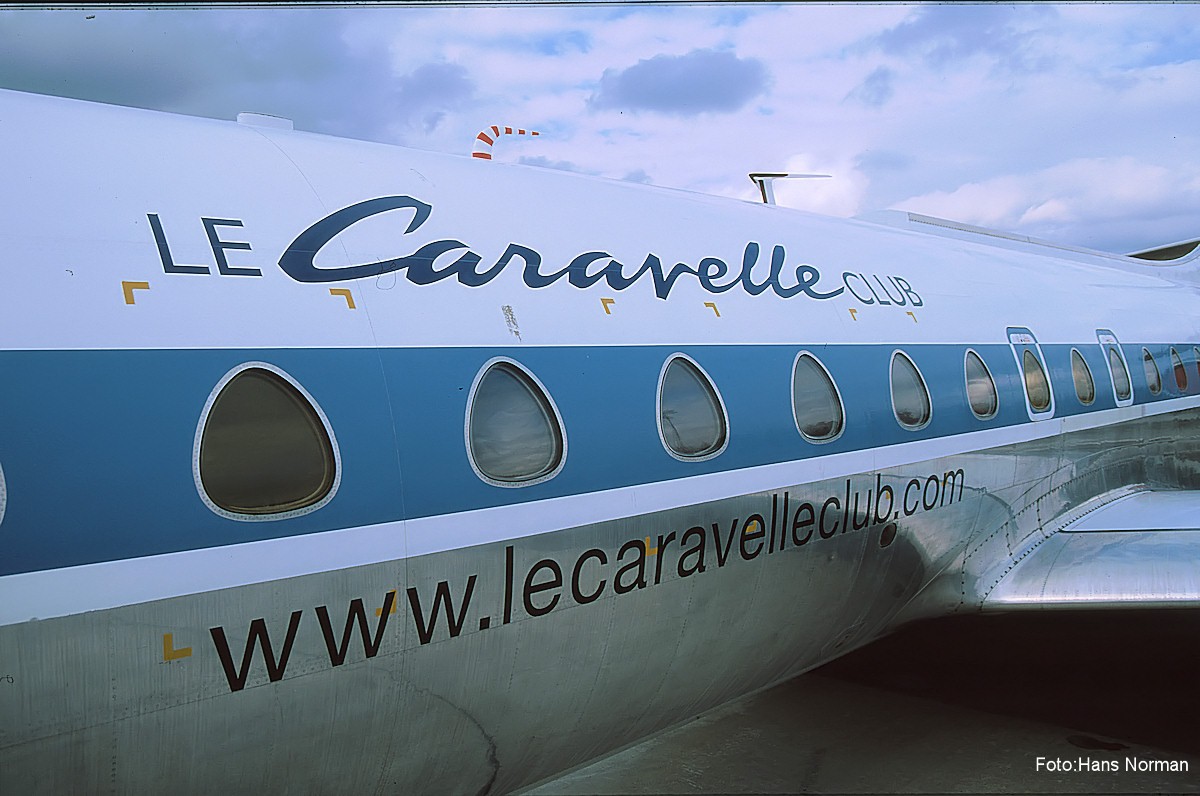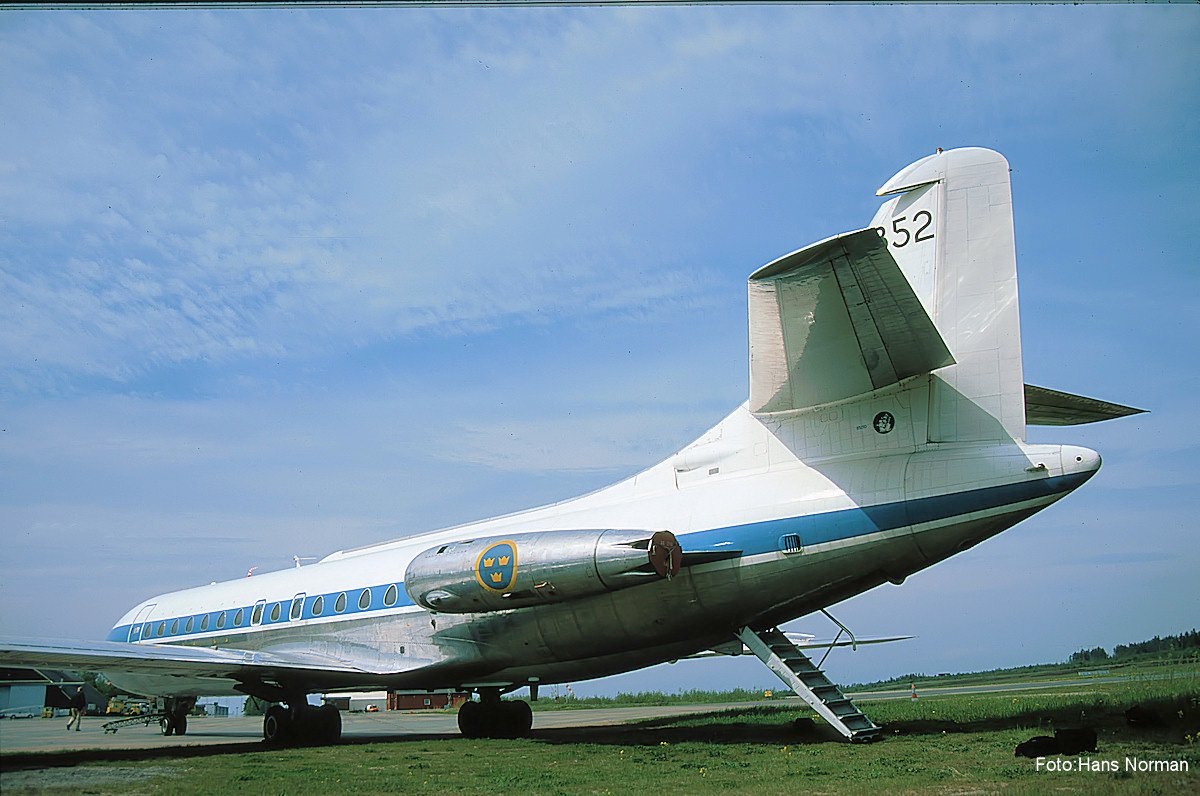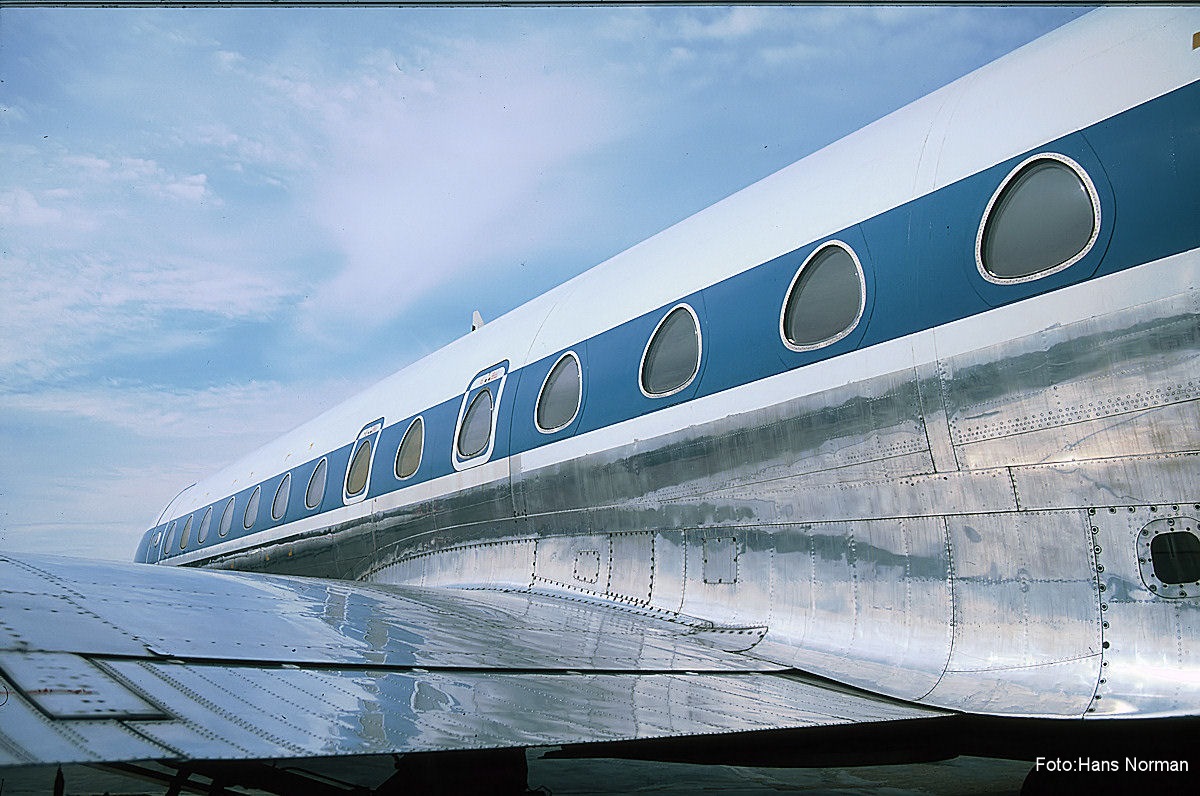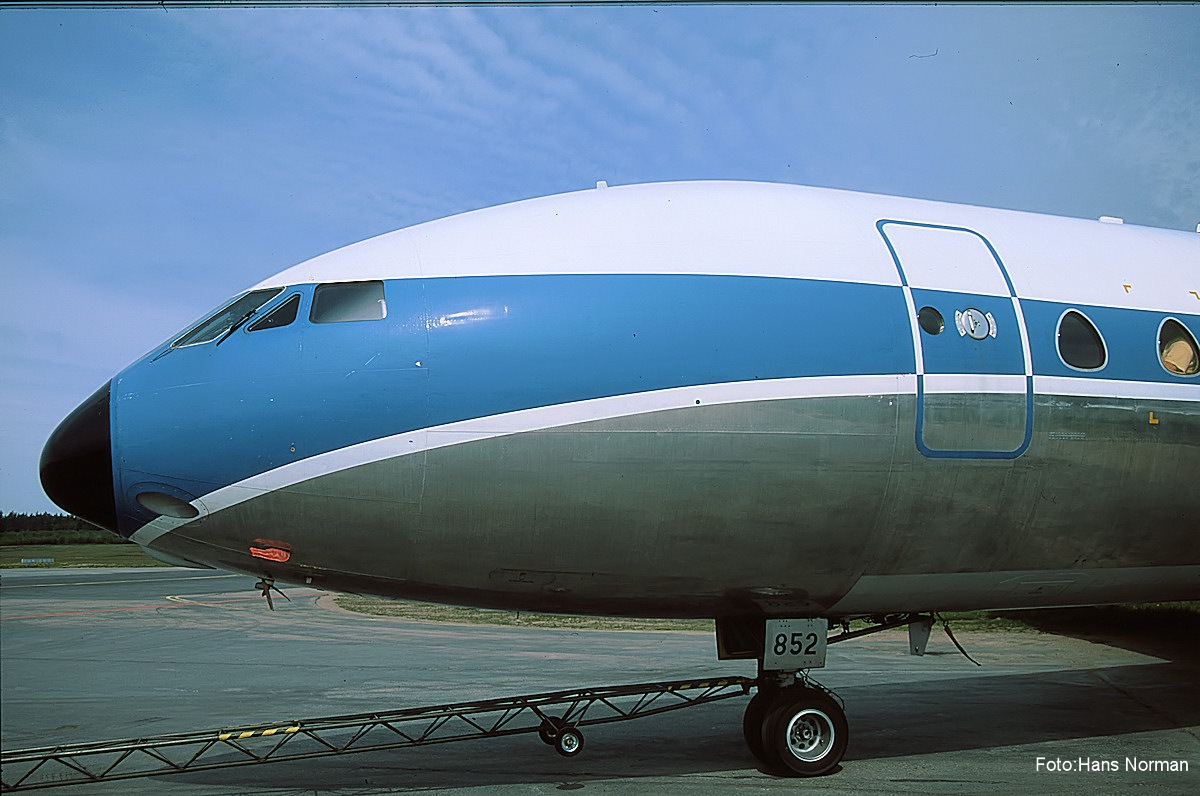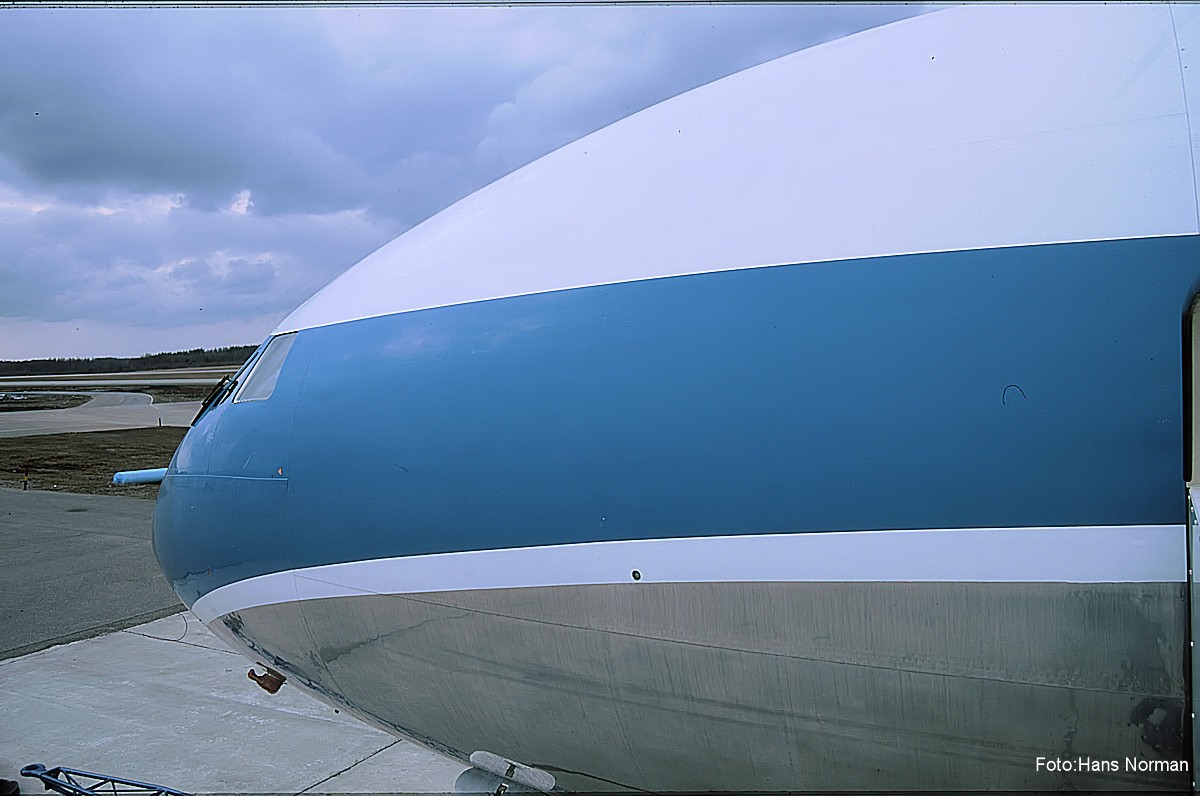| In the history of commercial aviation, the Sud-Aviation Caravelle plays an important part. The Caravelle was the first commercial jet-aircraft specifically designed for short- to medium range routes. It first flew on May 27th, 1955, just three weeks before the "competing" Russian Tupolev TU-104. The Caravelle also plays an important part in Swedish commercial aviation. Scandinavian Airlines Systems (SAS) was a launch customer for the beautiful and futuristic design and placed an order in June 1957 for six machines. The order was extended with another six aircraft in 1958. | SAS consequently received the first example on April 10th, 1959, and put the aircraft into regular service on April 26th, 1959. The first aircraft was LN-KLH Caravelle III (converted I) "Finn Viking". Depending on how you look at it, SAS thus became the first airline in the world to operate the Caravelle in regular service, initially between Copenhagen and Beirut. At its peak, SAS operated a total of 20 Caravelles on services throughout Europe, Africa and the Middle East. All Caravelles in SAS service was of the III-model. SAS operated the Caravelle for 15 years until 1974. |
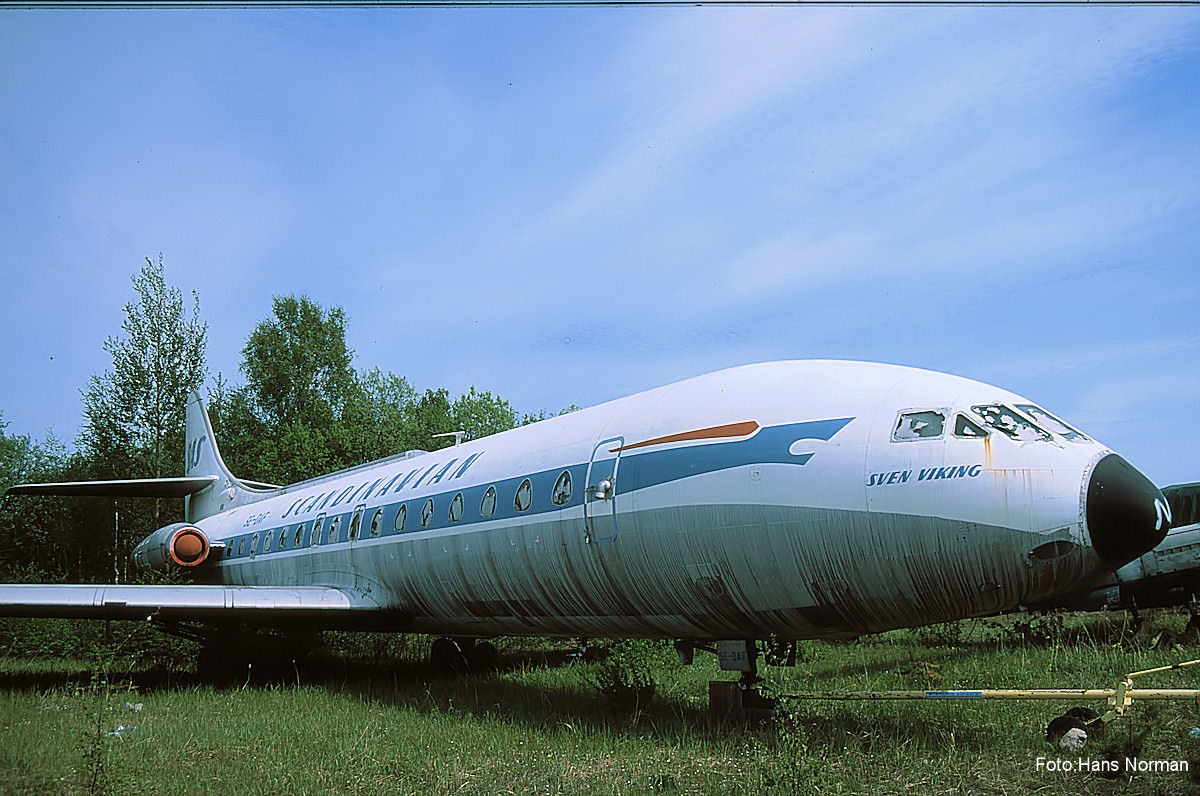
A former SAS Caravelle, SE-DAF "Sven Viking", since long retired
from active duty, is resting at Stockholm Arlanda in May, 1999.
